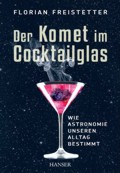There is a class of aspirin commercials in which actors pretending to be doctors reveal the competing product to have only so much of the painkilling ingredient that doctors recommand most – the don’t tell you what the mysterious ingredient is. Whereas their product has a dramatically larrger amount (1.2 to 2 times more per tablet). So buy their product. But why not just take two of the competing tablets? (…)
Commerical culture is full of similar misdirections and evasions at the expense of the consumer. You’re not supposed to ask. Don’t think. Buy
Nicht nur die Anbieter von esoterischen und pseudowissenschaftlichen Produkten wollen, dass die Kunden nicht allzuviel nachdenken. Auch normale Firmen, Politiker, Fernsehsender, etc wollen uns oft Dinge verkaufen, die wir eigentlich nicht haben wollen würden, wenn wir darüber nachdenken würden.
Sagan gibt nun Tipps, wie man solch einen Unsinn erkennen kann.
What skeptical thinking boils down to is the means to construct, and to understand, a reasoned argument. The question is not whether we like the conclusion that emerges out of a train of reasoning, but whether the conclusion follows from the premise or starting point and whether that premise is true.
Unter den “Werkzeugen” die man braucht, um Unsinn zu erkennen, findet sich folgende:
- Wherever possible there must be independent confirmation of the facts
- Encourage substantive debate on the evidence by knowledgeable proponents of all points of view.
- Arguments from authority carry little weight (in science there are no “authorities”).
- Spin more than one hypothesis – don’t simply run with the first idea that caught your fancy.
- Try not to get overly attached to a hypothesis just because it’s yours.
- Quantify, wherever possible.
- If there is a chain of argument every link in the chain must work.
- “Occam’s razor” – if there are two hypothesis that explain the data equally well choose the simpler.
- Ask whether the hypothesis can, at least in principle, be falsified (shown to be false by some unambiguous test). In other words, it is testable? Can others duplicate the experiment and get the same result?
- Conduct control experiments – especially “double blind” experiments where the person taking measurements is not aware of the test and control subjects.
- Check for confounding factors – separate the variables.
Sagan listet auch die verschiedenen logischen Fehlschlüsse auf, die nicht geeignet sind, um vernünftige und verläßliche Aussagen zu erhalten (und weißt darauf hin, dass man sie besonders oft in Religion und Politik findet):
- Ad hominem – attacking the arguer and not the argument.
- Argument from “authority”.
- Argument from adverse consequences (putting pressure on the decision maker by pointing out dire consequences of an “unfavourable” decision).
- Appeal to ignorance (absence of evidence is not evidence of absence).
- Special pleading (typically referring to god’s will).
- Begging the question (assuming an answer in the way the question is phrased).
- Observational selection (counting the hits and forgetting the misses).
- Statistics of small numbers (such as drawing conclusions from inadequate sample sizes).
- Misunderstanding the nature of statistics (President Eisenhower expressing astonishment and alarm on discovering that fully half of all Americans have below average intelligence!)
- Inconsistency (e.g. military expenditures based on worst case scenarios but scientific projections on environmental dangers thriftily ignored because they are not “proved”).
- Non sequitur – “it does not follow” – the logic falls down.
- Post hoc, ergo propter hoc – “it happened after so it was caused by” – confusion of cause and effect.
- Meaningless question (“what happens when an irresistible force meets an immovable object?).
- Excluded middle – considering only the two extremes in a range of possibilities (making the “other side” look worse than it really is).
- Short-term v. long-term – a subset of excluded middle (“why pursue fundamental science when we have so huge a budget deficit?”).
- Slippery slope – a subset of excluded middle – unwarranted extrapolation of the effects (give an inch and they will take a mile).
- Confusion of correlation and causation.
- Straw man – caricaturing (or stereotyping) a position to make it easier to attack..
- Suppressed evidence or half-truths.
- Weasel words – for example, use of euphemisms for war such as “police action” to get around limitations on Presidential powers. “An important art of politicians is to find new names for institutions which under old names have become odious to the public”
Ich sollte das alles wirklich einmal in Ruhe auf deutsch übersetzen (oder gibts das schon wo online?) und dann nochmal eine ausführliche, kommentierte Version davon veröffentlichen. Solche Sachen können gar nicht weit genug verbreitet werden!











Kommentare (11)